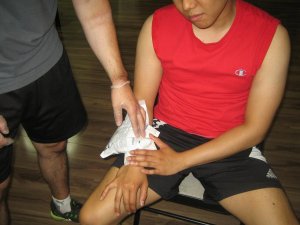Animal bites are common occurrence in our society and there different types of animals that can bite whether pets or wild animals. Children and adults are susceptible to animal bites. Most animal bites are usually inflicted by a cat or a dog. There are also some animals that can bite such as skunks, raccoons, foxes, snakes, ferrets, squirrels and hamsters. In coastal areas, animals that can bite include sharks and eels.
An animal bite should not be ignored since it can cause infection, tetanus or rabies which is a dangerous disease. Infections happen due to the bacteria that are found in mouth of the animal that can cause contamination of the wound. These bacteria will multiply in the wound and result to an infection that has the tendency to be a severe one. Wild animals that carry rabies include wolves, foxes, raccoons and bats.
Characteristics of animal bites
- There is redness, swelling and bleeding on the affected area
- Pain can be felt at the injured area
- Anxiety
- Fear that develops and persists due to the bite
Symptoms of an infected bite wound

- A throbbing pain can be felt on the affected area
- Warmth around the affected area
- Drainage of pus from the site of wound
- Red streaks that starts to spread from the bite site
- Weakness and fever
- Lymph nodes are swollen. If the bite was inflicted on the hand and becomes infected, it will cause the lymph nodes in the armpit to swell.
Once any of the symptoms of a developing infection are observed, it is vital to seek medical attention in order to prevent complications from arising.
Treatment and home remedies of animal bites
- Immediately after the injury, wash the wound using soap and water. Make sure to scrub the wound thoroughly in order to remove saliva and any debris from the affected area.
- If the bite inflicted by an animal is severely bleeding with a wide opening, you have to apply direct and firm pressure over the wound.
- If only a superficial scratch was inflicted by an animal, clean the wound using warm water and soap, then carefully rinse for several minutes after cleansing. Do not forget to apply an antibiotic cream in order to minimize the risk of infection to develop and then wrap it using a sterile bandage
- If bitten by a pet cat or dog, find out if the animal is vaccinated for rabies by asking the owner.
- If a healthy pet inflicted a bite on an individual, the animal should be placed under observation for 10 days to check for the development of rabies symptoms.
- If bitten by a wild animal, it is important to bring the individual to the nearest emergency department for further care. Remember that the risk for rabies is high if the bite was inflicted by a wild animal.
- A tetanus shot should be administered immediately after sustaining any animal bite.
